Matador Network's Blog, page 689
March 10, 2021
Best dog-friendly Airbnbs to rent

We hope you love the spaces and stays we recommend! Just so you know, Matador may collect a small commission from the links on this page if you decide to book a stay, and listed prices are accurate as of the time of publication.
More than 50 percent of travelers bring a dog on at least some of their travels, according to a recent TripAdvisor study. A dog-friendly Airbnb in a pristine location isn’t always an easy thing to find, even in a place you’ve been to before and generally know your way around. There are, however, many impressive Airbnb rentals around the world that welcome dogs, including some of the site’s most popular listings. These are the most wish-listed dog-friendly Airbnbs on the site.
Underground Hygge — Orondo, Washington
Photo: Airbnb
Hobbit life is the best life. Underground Hygge, a Washington state Airbnb of increasing fame as one of the site’s most wish-listed stays, is even better because your pup can accompany you on the journey. Its host seeks to “charm your expedition of repose” by giving you the rare opportunity to actually sleep inside a mountain — the front door opens into the living quarters tucked into a hillside in the Columbia River Gorge. You and your dog can meander along the onsite pathway, though there are no reports of it leading to Middle Earth.
Price: $400 per night
I Sette Coni — Cisternino, Italy
Photo: Airbnb
Your pup will love exploring the country surrounds of this cottage in southeastern Italy, outside the Puglian town of Ostuni. It’s quite removed from the hustle of the Amalfi Coast and major cities, showcasing instead the quiet side of Italy. There’s plenty of space to roam and afterward, lounge on the stone patio and take in the views. The beach isn’t far, nor is the village square, but we won’t blame you if you and the dog spend much of your stay enjoying the peaceful solitude.
Price: $79 per night
Douro Villa with swimming pool — Penafiel, Portugal
Photo: Airbnb
Another relaxing, mountainside stay, this villa comes with an outdoor pool that overlooks the Douro River below and rolling hills beyond. Bring your dog and a few friends, as this place is basically a private resort — there’s room for nine people, and though it’s outside of town, a bus picks up just down the road to head into the city of Oporto. You and your pup can explore trails and head down to the river, just be mindful of the on-site farm animals.
Price: $381 per night
Gold Coast Hinterland Villa — Mount Nathan, Australia
Photo: Airbnb
Australia’s Gold Coast is often thought of as a surfing and beach destination, but as this luxury villa proves, the region has some serious mountain chops as well. The Gold Coast Hinterland Villa is proof. Up in the Hinterlands above the city, you and your family (including the dog, of course) can hike, swim, visit theme parks, and the popular themed dinner party, Outback Spectacular, nearby, and if the swell comes in, Surfer’s Paradise is just 25 minutes away.
Price: $315 per night
Trullo del 1800 — Cisternino, Italy
Photo: Airbnb
Cisternino continues its case for being the best dog-friendly Airbnb destination with the Trullo del 1800. A trullo is a conical-shaped, stone hut — though this one resembles an old European castle as much as it does its farmhouse roots. Walk the nearby country roads with your dog and relax on the sun terrace under the gaze of the property’s three spired cones. Up to five guests can stay in the three bedrooms. Should your party wish to spend most of your time on site, the host offers breakfast, lunch, and dinner on request, for an additional charge, as well as an airport shuttle. After a few days relaxing here, you’ll be ready to apply for a soggiorno.
Price: $119 per night
Unique Architecture Cave House — Oia, Greece
Photo: Airbnb
It’s called a cave house, but this dog-friendly Airbnb on the Aegean Sea is on the cliffs of the caldera overlooking the water, its white facade the perfect Grecian contrast to the blue water. The property is part of a collection of cave houses and is a former bakery that has been renovated by local architects. It’s within walking distance of the shops and cafes of Oia, a town on Santorini far enough south in the Aegean Sea that it’s closer to the island of Crete than it is to Athens. Two bedrooms sleep four guests, and the highlight is the patio where you can watch boats come into the island.
Price: $438 per night
The Cozy Palace — Marrakech, Morocco
Photo: Airbnb
Live like a king in this stately room in a Marrakech boutique hotel. Located in the city’s Medina, the traditional Arab section of Marrakech, this unique spot gives your dog and yourself the chance to indulge in the old-style aesthetic of the Medina with a bird’s-eye view of the surrounding neighborhood. Life is much slower here than in the rest of this busy city, which is a good thing because both you and your dog will want to relax in the Moresque sheets. The unit sleeps four in two beds, and is within walking distance of cafes and shops.
Price: $48 per night
Waterfront with Extraordinary View — Kotor, Montenegro
Photo: Airbnb
Stay right on the waterfront in one of Montenegro’s top tourist destinations. This dog-friendly Airbnb is a studio apartment, but it’s all good because you and your dog will spend most of your time outside on the checkered balcony watching people come in off the water and maybe even negotiating a deal for some fresh seafood. Walk to the adjacent Perast museum and when you return, settle with a drink onto the balcony and take in views of the islands of Sv Đorđe and Lady of the Rocks out in the Bay of Kotor. Four guests can stay here per night.
Price: $58 per night
La Salentina — Tricasse, Italy
Photo: Airbnb
La Salentina is the top dog-friendly spot in the Salento peninsula. Lounge poolside with a drink in your hand, wafting in the Myrtle drifting up from the coast down below. Beach access from the unit is just a couple minutes’ walk, and also nearby are the cafes and amenities of the town of Otranto-Santa Maria di Leuca, the furthest south town on the peninsula. This spot is great for families, with room for nine in four bedrooms with three bathrooms. Fill it up and you’re also looking at a budget stay of around $10 per person, per night. 
Price: $82 per night
More like thisWhere to Stay9 dreamiest Airbnbs in the south of FranceThe post Airbnb’s most wish-listed dog-friendly stays for travel with your pup appeared first on Matador Network.

World's worst cities for traffic

Everyone likes to complain that their city has the worst traffic, but somewhere out there, there’s a city that actually has the worst traffic in the world. It’s not a designation any city particularly wants, but there might be a peculiar sense of pride attached with living in one of the world’s most traffic-heavy cities. After all, if you can handle it there, you can handle it anywhere. INRIX, a private company that analyzes traffic data from around the world compiled a scorecard listing the top cities with the worst traffic in the world.
The Global Traffic Scorecard ranks cities based on:
Impact rank (a calculated commute based on the city’s population and delay linked to congestion)The number of hours lost in congestion (during peak hours compared to free-flowing conditions)Inner city last-mile speed (the speed at which a driver can expect to travel one mile into the central business district during peak hours)The percentage difference in the number of hours lost to congestion compared with the previous yearThe top 10 cities with the worst traffic are as follows:
Bogota, ColombiaBucharest, RomaniaNew York City, USAMoscow, RussiaPhiladelphia, USAParis, FranceChicago, USAQuito, EcuadorZagreb, CroatiaCali, ColombiaIt’s probably not surprising to most Americans that New York City is in the top three, but it might surprise you to learn it’s not number one. Bogota, Colombia, takes the top spot, with an average of 133 hours lost in traffic congestion and an average speed of 11 mph for the last mile. Eastern Europe might not be known for its traffic, but Bucharest, Romania, comes in second with 134 hours lost in congestion but a slightly faster last mile speed of 15 mph. New York City is number three, with 100 hours lost in traffic and a last-mile speed of 12 mph.
The United States also has the distinction of appearing on the top 10 list three times, more than any other country. 
The post These 10 cities have the worst traffic in the world appeared first on Matador Network.

At Memphis’ Global Café, where refugees run the kitchen, cooking changes lives

Sabine Langer understands upheaval, sudden moves, and the chaos of adjusting to a new home on the fly. She’s been through it many times before: At 21, she immigrated from Sweden to Southern California to accommodate her former husband’s job. In a string of hectic years following that initial move, she and her family pingponged between Memphis and Dallas, following her husband for work. She learned not to unpack all the moving boxes, knowing the latest move was only temporary.
Finally in 2012, Langer and her children settled permanently in Memphis (after living there for two years previously). She’s lived there for eight years now, and in 2012 she opened Global Café, a restaurant where all the food is prepared by refugees. Her own experience as an immigrant inspired her to find a way to help others with less resources and financial security find fulfilling work in their new country — work that pays well, and helps them integrate into their communities so that they don’t feel like outsiders. For Langer, the arduous process behind settling in her new home still haunts her, and she hopes to ease that burden for newcomers to the United States, like she once was.
“They call it ‘adjusting your status’ when you’re a new immigrant,” Langer says of the process behind obtaining a green card. “It was a very difficult and lengthy process. I had money in the bank and I kind of spoke the language, so I could kind of read and figure my way through. But I was thinking about those [people] that just got here, and they don’t speak the language and how much harder it is on them.”
In each new city she arrived in, Langer occupied herself with volunteer work at organizations like the Refugee Empowerment Program. She quickly found many of the immigrants and refugees she encountered in her work were doctors or lawyers whose degrees and qualifications were not transferable to the US. Forced to take menial jobs to support their families, Langer witnessed a system that ultimately abandoned refugees without much of a support system.
“You don’t get a heads up about where you’re going to end up, so you don’t have time to learn the language,” she says. “So they take the first job they’re offered, usually in a warehouse, and they work tons of hours. They break their backs. They don’t have time to go to language classes, [yet] people see them as refusing to integrate.”
In Memphis, Langer started thinking about how she could help break this cycle and give recent refugees the opportunity for upward mobility in their communities. She ultimately decided that, despite the fact that she had no restaurant industry experience and “can’t boil an egg,” she should open a restaurant staffed entirely by refugees. Langer made connections with prospective employees through her children’s international school, and today Mario Bracho from Venezuela, and Somaya Mohamed, from Sudan, serve as Global Café’s chefs (the restaurant’s general manager, Jose, is from Mexico). The restaurant itself is located in a 2-million-square-foot building that also houses apartments, medical offices, and a high school.
“I do feel that the community is educating itself by being willing to support a restaurant like Global Café and by giving us the opportunity to teach them our cultures,” Bracho wrote to me in an email. “I can say that I created a bond with many clientele.”
Both Bracho and Mohamed told me that they had trouble adjusting to life in the US before they were hired at Global Café. Bracho worked several jobs and found the language barrier especially challenging. Both women agree that their work at the cafe has greatly improved their quality of life, allowing them more financial independence and free time to spend with their families. Though the dining room has been closed during the pandemic, the chefs are still making good money on a newly instituted delivery service, which the cafe was able to set up because the building reallocated its valet budget to delivery drivers.
Langer adds that two chefs who have since left the cafe were able to buy their homes, as was her general manager Jose. Bracho bought her own car. These material possessions mean greater security for their families, and eases the burden of settling comfortably in a totally foreign land.

Photo: Global Café
Langer opened the cafe in order to empower refugees financially to help build stable, thriving lives in the US. But she says that Global Café has another purpose, one that centers on exposing the Memphis community not just to diverse cuisines but also to the experiences and life stories of refugees.
“A big aspect of [Global Café] is to educate people about what an immigrant or a refugee is,” she says, “because the rhetoric became, after the last election, ‘They’re here to steal American jobs, they’re just here to bum off the system.’ It’s very important for people to understand that we are hard working, and the best way to for people to open their eyes is to see it in action.”
There’s a communal table in the middle of the Global Café dining room, and guests are encouraged to chat with the chefs and get to know them (if they aren’t otherwise occupied, of course). Langer suspects that 20 years ago, when most of the food in Memphis revolved around barbecue, Global Café wouldn’t have been successful. But before the pandemic, the dining room was filled with regulars. And that support hasn’t waned even after a year of lockdown — one woman stops by every day just to hand Jose, the general manager, a $20 bill.
Part of the reason that Global Café has such ardent fans is that Langer and the chefs were determined to run a kitchen that people visited not out of a sense of obligation but because the food is simply delicious.
“I didn’t want to be that charity that people came to and patted me on the head and said, ‘Okay I’m going to bite the bullet and eat there because I want to support refugees,’” she says. “I wanted it to be really good, so that people would come back.”
The effort to create a restaurant that builds fellowship between members of the Memphis community, provides financial advantages to refugees, and serves fantastic food, paid off. The staff really are making those connections Langer longed the restaurant would facilitate: Mohemad told me she regularly encounters customers who are curious about Sudanese culture and ask her to teach them phrases like “thank you” and “hello” in her language — conversations which she says have helped improve her own grasp on English, too. Sharing Sudanese food and fellowship with her American customers brings her joy.
“[The chefs] always say that the first ingredient of any dish is love,” says Langer. “They feel like sharing food is sharing their love.” 
The post At Memphis’ Global Café, where refugees run the kitchen, cooking changes lives appeared first on Matador Network.

Greece aims to reopen to international tourism on May 14
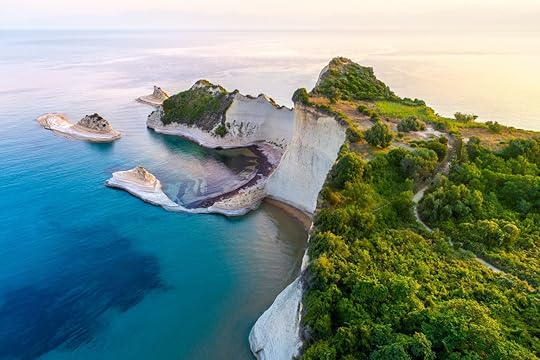
Haris Theoharis, Greece’s tourism minister, has announced that the country hopes to reopen to tourism in May. There would still be restrictions in place, as only tourists who have been vaccinated, have antibodies, or test negative for COVID-19 will be admitted.
At the IBT Berlin Tourism Fair, Theoharis said, “We aim to open tourism by 14 May with specific rules and updated protocols. Until then, we will gradually lift restrictions if conditions allow.”
After elderly and at-risk populations are vaccinated in Greece, the country aims to prioritize those in the tourism sector, underscoring the importance of the tourism industry.
On Tuesday, the EU commission’s vice president, Margatis Schinas, said he believed a digital vaccination pass would be ready by summer, which would allow for international tourism to resume in Europe.
“I think after the last summit there is convergence on the need for this digital certificate,” Schinas said. “It will be a European product and will be the same throughout Europe.”
It’s unclear whether such a certificate would be usable by non-EU residents who want to enter Europe. 
The post Greece aims to reopen to international tourism on May 14 appeared first on Matador Network.

Thailand will soon let visitors quarantine on a yacht

To boost tourism and make it easier for travelers to visit, Thailand is reducing its mandatory quarantine period for vaccinated visitors from 14 to seven days. Thailand requires travelers to be fully vaccinated within three months of their travel period and to take a COVID-19 test within three days of arrival in the country.
Travelers who are not vaccinated, but have a negative test result, have to quarantine for ten days.
To even further entice travelers, who may still be wary of the seven-day quarantine, the Thai government is launching a new initiative allowing visitors to spend their quarantine on a yacht.
The program would allow people with negative COVID-19 tests to board one of 100 yachts or small cruise ships in Phuket and spend their quarantine at sea. They will be allowed off the boat to swim, but not to go ashore, and given a digital wristband to monitor their temperature, blood pressure, and location. The program is slated to begin in April or May.
If you’re holding out until Thailand lifts all quarantine requirements, you may be waiting until October. The government has said that if it can vaccinate at least 70 percent of its medical personnel and at-risk residents by then, it may drop the mandatory quarantine. Until then, quarantining on a yacht is probably as good as it’s going to get. 
The post Thailand will soon let visitors quarantine on a yacht appeared first on Matador Network.

March 9, 2021
AITA travel app free flight giveaway

If there’s one thing all Americans can all agree on without too much controversy is that it’s been way too long since we could travel freely. For nearly a year now, international border closures and travel restrictions have kept most Americans grounded, and left many vacation days unused. That’s why App in the Air (from AITA, the International Air Transport Association) is giving one user a year’s worth of free flights, to help them make up for lost time.
AITA allows users to book travel with its exclusive airline and hotel booking tool, and even enables direct bookings with select airlines like United, Southwest, American, and more. From today, AITA is giving one user the enviable opportunity to fly for free for a whole year.
For a chance to win, just download the app and enter via the landing page. You’ll have to write what you would do with a year’s worth of flights, so make sure to give it some serious thought before answering. If you submit a video or photo stating how you plan to spend your “make-up” travel year, and tag @appintheair on social media, you’ll be given a bonus entry.
Applications are open from March 9 to 31, 2021. The winner will receive a credit of $5,000 to be used exclusively toward travel purchased on the app through 2023. 
The post This travel app is giving away a year’s worth of free flights appeared first on Matador Network.

‘Raya’ tries to be a potent ode to Southeast Asia, but it falls short of true representation

In one early scene of Raya and the Last Dragon, the titular heroine follows Chief Benja, her ba (father), into the kitchen, where the pair leans over a simmer pot of what looks like shrimp curry. Raya thinks the dish doesn’t quite taste right, so her father adds “shrimp paste from Tail, lemongrass from Talon, bamboo shoots from Spine, chilis from Fang, and palm sugar from Heart” — ingredients each region in a fractured, warring nation once known as Kumandra, which also happen to be the foundational ingredients that show up in recipes from countries in Southeast Asia like Indonesia, Malaysia, Vietnam, and the Philippines. The intimate interaction between father and daughter immediately reminded me of my own dad, who is half-Indonesian, spooning sambal in a steaming bowl of pho, and reminding me to add terasi — shrimp paste — to nasi goreng, Indonesian fried rice. My dad taught me how to connect to my ancestors, and my Indonesian heritage, by teaching me how to cook their food, and in that moving sequence, Chief Benja tries to impart a similar lesson to his daughter.

Photo: Disney+
In Raya and the Last Dragon, Raya and her father protect the Dragon Gem, an ancient relic which protects each region of the once united Kumandra kingdom. Five hundred years ago, the people of Kumandra lived alongside dragons, who protected the humans, brought them prosperity, and showered the land with rain so that it could thrive and grow. But then the Druun, purple orbs of energy that suck the life from the land, turning water to dust and people to stone, appeared and destroyed Kumandra. In a last ditch effort to save their home and their people, the remaining dragons poured their magic into the gem, defeating the Druun, reviving all the people but turning to stone themselves. Kumandra split into five tribes, each one vying for control of the gem. In the film’s present, the gem is destroyed after a shocking betrayal, and the Druun return. Raya must search Heart, Fang, Spine, Tail, and Talon for Sisu, the last dragon, who can restore the gem and unify Kumandra.
Director Don Hall told the BBC that “decision to film in the region was inspired by a trip the filmmaking team took” to Southeast Asia, and that Kumandra is a fantastical version of the region — it’s not meant to mirror it exactly. Still, there are clear nods to some Southeast Asian cultures peppered throughout the movie. In one scene, Chief Benja appears to wear a mask resembling a yaksha, the Thai demons who guard Buddhist temples. In another, representatives from each tribe gather in Heart, and their clothing resembles batik cloth; batik is an Indonesian technique for decorating material with intricate and delicate patterns.
Piles of dragon fruit and durian make cameos throughout the film — fruits which are often maligned in the media. And Boun, one of Raya’s allies, stocks little wooden pots of what looks like sambal on the combination restaurant and water taxi he uses to shuttle Raya and her companions from tribe to tribe. In one especially moving scene, Sisu and Boun drop flowers into the water in honor of their families who have been turned to stone by the Druun, which look nearly identical to Balinese Hindu canang sari flower offerings. Another long sequence takes place in Talon, a floating market that could easily be considered an homage to Cai Rang Floating Market in Vietnam, or the Maeklong Railway Market in Thailand.

Photo: Disney+
Clearly, the film portrays Kumandra as vibrant and lively, and its landscapes and the skintones of its people are diverse. But what struck me most is that the movie is filled with rich, deep, striking colors — a powerful rejoinder to the stereotypes that Southeast Asia is dry, dirty, or covered in garbage, even primitive. At its best, Raya is a loving ode to a region of the world that is often neglected or outright ignored in mainstream entertainment.
But that’s where the problems start. The fact is, Southeast Asia really is just a region, not a country, and its many cultures are disparate and diverse. There might be some overlap between what people eat in countries like Malaysia, Singapore, and Indonesia, but these cuisines are not at all the same or interchangeable. The film’s attempt to smush these cultures together diminishes the characteristics that make each one unique. Its central message is that unity makes conflicting peoples stronger — which is a fine lesson for children — but it seems simultaneously at odds with the fact that what makes Southeast Asia such a rich region is that it’s not a monolith. That each country’s (or tribe’s) unique characteristics can be a source of strength gets elided in favor of a vague call to bring people together.
The feeling that the filmmakers felt that Asian cultures are all interchangeable is also reflected in the primary cast: Kelly Marie Tran, who voices Raya, is the only Southeast Asian cast member; the rest are East Asian, plus Alan Tudyk who has a very small part as Raya’s animal best friend, Tuk Tuk. Moments in the film that did feel like respectful, accurate nods to different Southeast Asian cultures are probably thanks to Raya’s screenwriters, Malaysian Adele Lim and Vietnamese-American Qui Nguyen, but none of the film’s directors are Asian.

Photo: lev radin/Shutterstock
The fact that not a single Southeast Asian actor could be found to voice characters in a movie that was supposedly based on the region immediately undercuts any suggestion that Raya provides much-needed representation to the Disney princess oeuvre. That erasure perpetuates the racist idea that all Asian people look and sound the same, and that Southeast Asian cultures can be used for entertainment, but that it’s not important that our people profit from those representations. On top of that, the only Southeast Asian country that has access to Disney+ is Indonesia, so most people can’t even see the film that is supposed to represent them.
Disney is capable of crafting homages to diverse cultures that are at once fantastical, focused, and precise — Coco, for instance, is a deeply moving portrait of Mexico and its rich cultural traditions around music, family, and Dias de los Muertos. Disney’s upcoming film Encanto is set in a magical world inspired by Colombia, not a flattened version of all of South America at once.
Truthfully, I did find it moving to see so many elements of a culture that I recognized as my own on screen, and to know that those images are being projected into the living rooms of people who might never have encountered them otherwise. And I hope that families who watch the movie help their children research more concrete elements of Southeast Asia featured in the film that they found fascinating or beautiful.
But ultimately, Raya felt a bit hollow. Once you look beneath the surface you find that there is very little to back up the claim that this movie is a win for Southeast Asian representation. Which is too bad, because the film itself tries hard to show that this region is blossoming with wonder. But it is long past due for a much more reverent tribute — one that actually includes our voices. 
The post ‘Raya’ tries to be a potent ode to Southeast Asia, but it falls short of true representation appeared first on Matador Network.

‘Raya and the Last Dragon’ tries to be a potent ode to Southeast Asia, but it falls short of true representation

In one early scene of Raya and the Last Dragon, the titular heroine follows Chief Benja, her ba (father), into the kitchen, where the pair leans over a simmer pot of what looks like shrimp curry. Raya thinks the dish doesn’t quite taste right, so her father adds “shrimp paste from Tail, lemongrass from Talon, bamboo shoots from Spine, chilis from Fang, and palm sugar from Heart” — ingredients each region in a fractured, warring nation once known as Kumandra, which also happen to be the foundational ingredients that show up in recipes from countries in Southeast Asia like Indonesia, Malaysia, Vietnam, and the Philippines. The intimate interaction between father and daughter immediately reminded me of my own dad, who is half-Indonesian, spooning sambal in a steaming bowl of pho, and reminding me to add terasi — shrimp paste — to nasi goreng, Indonesian fried rice. My dad taught me how to connect to my ancestors, and my Indonesian heritage, by teaching me how to cook their food, and in that moving sequence, Chief Benja tries to impart a similar lesson to his daughter.

Photo: Disney+
In Raya and the Last Dragon, Raya and her father protect the Dragon Gem, an ancient relic which protects each region of the once united Kumandra kingdom. Five hundred years ago, the people of Kumandra lived alongside dragons, who protected the humans, brought them prosperity, and showered the land with rain so that it could thrive and grow. But then the Druun, purple orbs of energy that suck the life from the land, turning water to dust and people to stone, appeared and destroyed Kumandra. In a last ditch effort to save their home and their people, the remaining dragons poured their magic into the gem, defeating the Druun, reviving all the people but turning to stone themselves. Kumandra split into five tribes, each one vying for control of the gem. In the film’s present, the gem is destroyed after a shocking betrayal, and the Druun return. Raya must search Heart, Fang, Spine, Tail, and Talon for Sisu, the last dragon, who can restore the gem and unify Kumandra.
Director Don Hall told the BBC that “decision to film in the region was inspired by a trip the filmmaking team took” to Southeast Asia, and that Kumandra is a fantastical version of the region — it’s not meant to mirror it exactly. Still, there are clear nods to some Southeast Asian cultures peppered throughout the movie. In one scene, Chief Benja appears to wear a mask resembling a yaksha, the Thai demons who guard Buddhist temples. In another, representatives from each tribe gather in Heart, and their clothing resembles batik cloth; batik is an Indonesian technique for decorating material with intricate and delicate patterns.
Piles of dragon fruit and durian make cameos throughout the film — fruits which are often maligned in the media. And Boun, one of Raya’s allies, stocks little wooden pots of what looks like sambal on the combination restaurant and water taxi he uses to shuttle Raya and her companions from tribe to tribe. In one especially moving scene, Sisu and Boun drop flowers into the water in honor of their families who have been turned to stone by the Druun, which look nearly identical to Balinese Hindu canang sari flower offerings. Another long sequence takes place in Talon, a floating market that could easily be considered an homage to Cai Rang Floating Market in Vietnam, or the Maeklong Railway Market in Thailand.

Photo: Disney+
Clearly, the film portrays Kumandra as vibrant and lively, and its landscapes and the skintones of its people are diverse. But what struck me most is that the movie is filled with rich, deep, striking colors — a powerful rejoinder to the stereotypes that Southeast Asia is dry, dirty, or covered in garbage, even primitive. At its best, Raya is a loving ode to a region of the world that is often neglected or outright ignored in mainstream entertainment.
But that’s where the problems start. The fact is, Southeast Asia really is just a region, not a country, and its many cultures are disparate and diverse. There might be some overlap between what people eat in countries like Malaysia, Singapore, and Indonesia, but these cuisines are not at all the same or interchangeable. The film’s attempt to smush these cultures together diminishes the characteristics that make each one unique. Its central message is that unity makes conflicting peoples stronger — which is a fine lesson for children — but it seems simultaneously at odds with the fact that what makes Southeast Asia such a rich region is that it’s not a monolith. That each country’s (or tribe’s) unique characteristics can be a source of strength gets elided in favor of a vague call to bring people together.
The feeling that the filmmakers felt that Asian cultures are all interchangeable is also reflected in the primary cast: Kelly Marie Tran, who voices Raya, is the only Southeast Asian cast member; the rest are East Asian, plus Alan Tudyk who has a very small part as Raya’s animal best friend, Tuk Tuk. Moments in the film that did feel like respectful, accurate nods to different Southeast Asian cultures are probably thanks to Raya’s screenwriters, Malaysian Adele Lim and Vietnamese-American Qui Nguyen, but none of the film’s directors are Asian.

Photo: lev radin/Shutterstock
The fact that not a single Southeast Asian actor could be found to voice characters in a movie that was supposedly based on the region immediately undercuts any suggestion that Raya provides much-needed representation to the Disney princess oeuvre. That erasure perpetuates the racist idea that all Asian people look and sound the same, and that Southeast Asian cultures can be used for entertainment, but that it’s not important that our people profit from those representations. On top of that, the only Southeast Asian country that has access to Disney+ is Indonesia, so most people can’t even see the film that is supposed to represent them.
Disney is capable of crafting homages to diverse cultures that are at once fantastical, focused, and precise — Coco, for instance, is a deeply moving portrait of Mexico and its rich cultural traditions around music, family, and Dias de los Muertos. Disney’s upcoming film Encanto is set in a magical world inspired by Colombia, not a flattened version of all of South America at once.
Truthfully, I did find it moving to see so many elements of a culture that I recognized as my own on screen, and to know that those images are being projected into the living rooms of people who might never have encountered them otherwise. And I hope that families who watch the movie help their children research more concrete elements of Southeast Asia featured in the film that they found fascinating or beautiful.
But ultimately, Raya felt a bit hollow. Once you look beneath the surface you find that there is very little to back up the claim that this movie is a win for Southeast Asian representation. Which is too bad, because the film itself tries hard to show that this region is blossoming with wonder. But it is long past due for a much more reverent tribute — one that actually includes our voices. 
The post ‘Raya and the Last Dragon’ tries to be a potent ode to Southeast Asia, but it falls short of true representation appeared first on Matador Network.

Ultimate American whiskey road trip
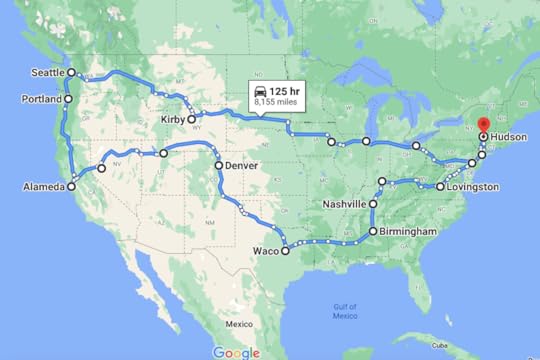
America may drink more vodka than any other spirit, but it is very much a whiskey-loving country. Some of the most recognizable brands from the States carry the name of our whiskey-making forefathers, like Jack, Jim, and Evan. Bourbon is the country’s Congress-approved official spirit. And while Kentucky and Tennessee get most of the attention, there are all kinds of interesting whiskey made across the entire US.
Which brings us to the ultimate American whiskey road trip. It starts in New York, heads south through Texas, and then west to California before taking a trip back east on a northern route. Even this 20-stop trip won’t cover all of the great whiskey being made stateside, but it’s a great start. Here’s how to plan the most extravagant, coast-to-coast whiskey road trip.
Editor’s note: While some places are starting to open back up, most distilleries remain closed or aren’t offering tours. We suggest you plan now, travel later.
New YorkIn 2015, distillers from Black Button Distilling, Coppersea Distilling, Finger Lakes Distilling, Kings County Distillery, New York Distilling, and Tuthilltown Spirits created a new whiskey designation called Empire Rye. It’s a reference to New York’s importance in rye whiskey production prior to Prohibition. These distilleries (Van Brundt joined later) all make a whiskey from start to finish in New York using at least 75 percent New York-grown rye grain. The result is a delicious class of whiskeys that can compete with the best. These distilleries are ample reason enough to start with New York on any whiskey-focused road trip.
Where to go: Hudson is a good home base to dive into Empire Rye, though city lovers may prefer to start in the Big Apple. You can find many of the distilleries in the Hudson Valley (including Tuthilltown, Hillrock, and Coppersea), as well as in New York City (New York Distilling Company, Van Brundt, and Kings County Distilling).
VirginiaNear the 500-or-so-person town of Lovingston, Virginia, you’ll find Virginia Distillery Co. It started in 2011 and makes an American single malt as well as a line called Virginia-Highland Whisky that blends Virginia-made whiskey with Scotch whisky and ages it in barrels previously used by local breweries, cideries, and distilleries. The latter is unlike what you’ll find anywhere else in all the best ways. Virginia Distillery Co. also has an on-site museum where you can learn about the long history of distilling in Virginia, which is the original home of spirit-making in America — George Washington’s distillery in Mount Vernon was once the largest whiskey distillery in the country.
Where to go: Starting at Virginia Distillery Co. will give you a good sense of what the state’s whiskey scene is all about, but it’s far from alone. From Lovingston (or nearby Charlottesville), you can expand out to Catoctin Creek, in Purcellville, which makes an award-winning rye whiskey, as well as Smith Bowman in Fredericksburg, which is the oldest continuously operating distillery in Virginia and makes a well-loved bourbon.
Kentucky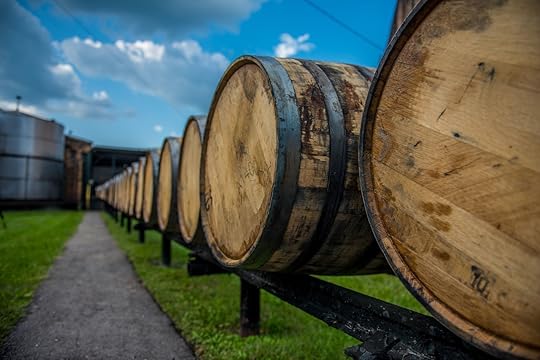
Photo: thomas carr/Shutterstock
Kentucky holds a special place in the hearts of American whiskey lovers. It’s the original home of bourbon, and there are many storied names in the industry. There’s frankly no American whiskey tour that would be complete without a good chunk of time spent in Kentucky. Distilleries can be found across the state, and there’s an official Kentucky bourbon trail to follow for the full experience (though there are also great distilleries to be found off of the bourbon trail, too).
Where to go: Start in Louisville, where you’ll find the historic Whiskey Row that was once the center of the city’s bourbon industry. Don’t miss the Old Forester distillery in the city, as well as Michter’s, Evan Williams, Stitzel-Weller, and get a taste of the new guard of Louisville bourbon at Kentucky Peerless. Make time to get out of Louisville, too, for excursions to Lawrenceburg for Four Roses, Versailles for Woodford Reserve, and Loretto for Maker’s Mark.
TennesseeIf Kentucky is the original home of American whiskey, Tennessee is its home away from home. Some of the largest, best-known distilleries can be found here, like Jack Daniel’s and George Dickel. There are many kinds of whiskey made in Tennessee. Perhaps the most distinctive are Tennessee-style whiskeys that follow the Lincoln County Process of charcoal mellowing. Along with the classics, a number of distilleries have popped up in Nashville and elsewhere over the past decade.
Where to go: Nashville is a fun place to center a Tennessee whiskey trip. Corsair, Nashville Craft, and Nelson’s Green Brier Distillery are all centered in the city. A trip to Lynchburg (which is infamously in a dry county) to see Jack Daniel’s is a must, as is a visit to the Uncle Nearest distillery in Shelbyville. Uncle Nearest comes from the history of Nathan “Nearest” Green, who was the first known Black master distiller and who taught Jack Daniel how to make whiskey. A trip to the Nearest Green Distillery is the best way to learn this history.
AlabamaModern whiskey-making in Alabama has a pretty short history. The state enacted Prohibition in 1915 — five years earlier than the rest of the country. A legal whiskey wasn’t made in Alabama again until 2015 when John Emerald Distilling in Opelika released John’s Alabama Single Malt Whiskey. A stop here is a nice middle point between the Midwest bourbons of Kentucky and Tennessee and the whiskeys made to the west.
Where to go: Dread River in Birmingham for its Distiller’s Select Straight Whiskey, and if you have time for a little detour, over to Opelika for John Emerald Distilling.
Texas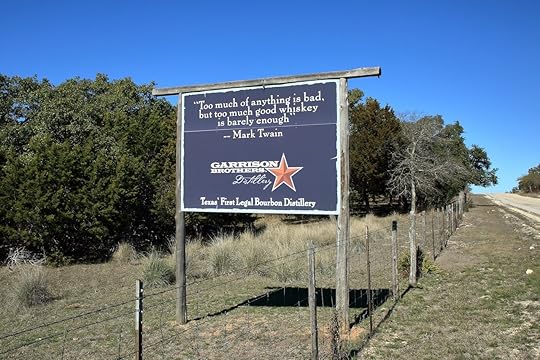
Photo: JustPixs/Shutterstock
In the 2000s, there were fewer than five distilleries making whiskey in Texas. Today there is an official Texas Whiskey Trail with more than 20 spots from San Antonio up to Dallas. Two of the early distilleries are still considered leaders: Balcones, which released the first Texas whiskey since Prohibition in 2009, and Garrison Brothers, which is the oldest Texas bourbon distilling license in 2006. Others have joined their ranks at an increasing pace over the past decade, including many that are making location-specific, grain-to-glass whiskeys.
Where to go: You probably already know that Texas is a big state. Start with Balcones in Waco and sip the Balcones Baby Blue Corn Whiskey. From there you can go north to Dallas and its first whiskey distilleries (Ironroot and Firestone and Robertson are popular options) or south to the nine distilleries in the Austin area (including Garrison Brothers in Texas Hill Country), four in Houston, and two in San Antonio.
ColoradoThe Centennial State was one of the first to really foster a craft beer industry in the United States, and it’s more recently become just as much a leader in quality whiskey. Stranahan’s, which started in 2004, was the first small distillery to open in Colorado since Prohibition. Others have popped up in the Denver area and beyond. You’ll find whiskeys made exclusively with Colorado ingredients at Laws Whiskey House, a distillery with its own malting floor at Leopold Bros., and a bourbon producer that’s won fans across the country at Breckenridge Distillery.
Where to go: Denver is where many of the best Colorado distilleries are located. A trip to Stranahan’s should be on the list — especially if you can make it to one of the distillery’s release parties. Laws Whiskey House will give you a new appreciation for the effort (and tasty payoff) that it takes to make whiskey using grains from nearby farms. Others in Denver to make sure you visit to become familiar with Colorado whiskey include Leopold Bros., Ironton Distillery, and Bear Creek Distillery. And don’t forget State 38 Distilling in nearby Golden, while Breckenridge Distillery proves there’s more to do in the ski town than hit the slopes.
UtahUtah doesn’t have the same reputation for craft spirits as its neighbor Colorado, but High West puts the state on the map for people who love good whiskey. High West opened in 2006 when it became the first legal whiskey distillery in Utah since 1870. The distillery made a name for itself by being hyper transparent about its blending practices. Many of its most famous bottlings are made up of a blend of whiskeys from the mega distiller MGP Ingredients as well as the distillery’s own product.
Where to go: The main location in Wanship is surrounded by the Wasatch-Uinta mountain range and is hard to beat in terms of whiskey with a view. In the winter, head a little farther south to High West’s Park City location. It’s at the bottom of a ski slope and is the world’s only ski-in micro-distillery.
Nevada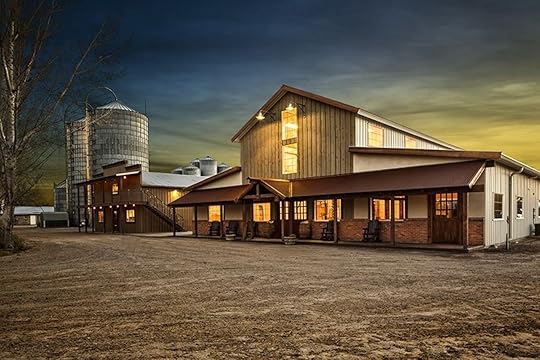
Photo: Frey Ranch Distillery/Facebook
Nevada is home to many vices, but a wealth of whiskey distilleries isn’t one of them. Still, the state is worth a stop on any trip west for people interested in seeing where the craft whiskey movement is growing. Just don’t expect to center a whiskey-focused visit to the state in Las Vegas. The most notable whiskey distillery in Nevada is in Fallon, which is about six hours from Las Vegas and an hour from Reno.
Where to go: Frey Ranch is the number one Nevada whiskey to see what farm-to-glass truly is. The specialty grains for the rye and bourbon are grown onsite, and the whiskey is distilled, aged, and bottled not far from the farm. If you’re looking for others in the state, there’s The Depot Craft Brewery Distillery in Reno and the Las Vegas Distillery in Henderson.
CaliforniaThe state may be better known for wine than whiskey, but don’t write California off when it comes to hard spirits. One of California’s most famous distilleries, St. George Spirits, puts a California spin on Kentucky and Tennessee whiskeys by blending them with the distillery’s malt whiskey. A number of other distilleries make quality whiskey using all California ingredients. A stop in Northern California is an ideal start to seeing the West Coast’s whiskey scene.
Where to go: Start at St. George Spirits in Alameda and then head north to wine country where you’ll find Charbay’s beer-centric whiskey in St. Helena, Griffo Distillery’s bourbon in Petaluma, and whiskey aged in wine barrels at Graton Distilling Company in Graton.
OregonThe Pacific Northwest is where you’ll find two of the most exciting American single malt whiskeys: Westward, in Portland, and Westland, in Seattle (more on that later). People in Oregon were early to the craft whiskey boom, as to be expected in such a drinks-loving state. Westward opened in 2004, and a number of others can be found along Portland’s Distillery Row.
Where to go: Start at Westward to sip on definition-setting American single malts as well as expressions aged in casks previously used for pinot noir or stout beer. Rolling River Spirits and New Deal Distillery on Distillery Row also offer whiskeys. McCarthy’s is just outside of Portland in Clear Creek, and a trip to Oregon wouldn’t be complete without a visit to Rogue Ales and Spirits in Newport.
Washington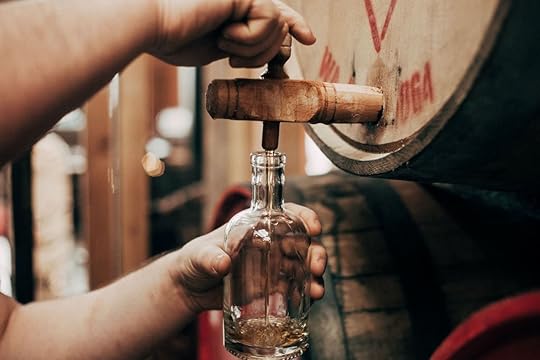
Photo: Westland Distillery
/Facebook
Continue north into Washington to complete the West Coast portion of the trip. Washington, like Oregon, is known for craft beverages of all kinds — it has the third most distilleries by state after California and New York. Whiskey is one major highlight. There’s Westland, which is one of the leaders in the new American single malt category; Dry Fly, which released the state’s first bourbon in 2007; and Bainbridge, which makes whiskey using 100 percent organic Washington wheat.
Where to go: Many of the best distilleries are centered in and around Seattle, including Westland (be sure to try the Native Oak series), Copperworks, Oola, Batch 206, and Bainbridge. On your way back east, be sure to stop by Dry Fly in Spokane.
WyomingA brief stop in Wyoming is necessary to complete the full cross-country loop. The state isn’t a hotbed for whiskey distilling compared to the West Coast states, but it, too, has had something of a brewing and distilling renaissance over the past decade.
Where to go: Wyoming Whiskey is the most famous in the state, and it has earned top praise from publications like Esquire, Whisky Magazine, and more. Another distillery in the state to pay attention to is Pine Bluffs Distilling. It makes rye, bourbon, and oat whiskeys using Wyoming grains, and its location near the Colorado border makes it easy to pop in after a visit to Wyoming’s neighbor to the south.
IowaIowa produces the most corn in the United States. So it may come as a surprise that the state didn’t have a home-grown bourbon until 2010 when Cedar Ridge released the first since Prohibition. Today, Cedar Ridge uses corn grown on the family farm in Winthrop, and it’s put Iowa whiskey on the map with multiple awards for its rye, bourbon, and wheat whiskeys.
Where to go: Cedar Ridge in Swisher is the heart of Iowa whiskey distilling. There’s a wide range of whiskeys, all of which are worth a taste (there’s also wine made onsite). Other whiskey made in the state includes offerings from Mississippi River Distilling in Le Clare, Iowa Legendary in Carroll, Artisan Grain in Davenport, and 3-Oaks Distillery in Holy Cross.
IllinoisChicago was notorious for its continued whiskey importation and consumption during Prohibition. Oh how the times have changed. Today, whiskey made in the city and in Illinois in general is far better than what the ragers of the Roaring ‘20s were drinking.
Where to go: KOVAL makes a line of single barrel rye, bourbon, and oat whiskeys that are some of the best in Chicago. You can find beer-inspired single malt at Maplewood Brewery & Distillery, and FEW Spirits makes bourbons and ryes that are popular across the country. Chicago Distilling Company makes a range of spirits using Illinois grains, including a single malt whiskey, and has a tasting room for specialty cocktails.
OhioLike Alabama, Ohio was late to legalizing craft spirits and distilling. The state is quickly catching up on lost time thanks to a few innovative distillers, however. Some of the best homegrown whiskey in the state is made in Columbus, and the whiskeys can be found all over the Buckeye state.
Where to go: Middle West Spirits in Columbus makes six small batch whiskeys, including a wheat, straight rye, and bourbon. Also in Columbus, Watershed makes a bourbon along with lots of good non-whiskey spirits like a black walnut liqueur and a brandy made with Ohio apples.
Pennsylvania
Photo: New Liberty Distillery/Facebook
Pennsylvania was one of the leading whiskey-producing states in the early days of the country. Prohibition changed that, and it wasn’t until 2011 that distilling laws opened up enough to create a second boom in Pennsylvania spirits. Philadelphia is a great place to see this for yourself. You can experience the full scope of what the region has to offer by following the Philadelphia Distillery Trail.
Where to go: Philly’s New Liberty Distillery is housed in an early 1900s horse stable, which is fun, but the real draw is the award-winning whiskeys. Red Brick Craft Distillery makes small-batch whiskey and rum, while Hewn Spirits in Pipersville makes whiskeys from local grains that are aged in reclaimed rare-wood barrels. 
The post The ultimate American whiskey road trip, mapped appeared first on Matador Network.

What to do in the Pioneer Valley, MA
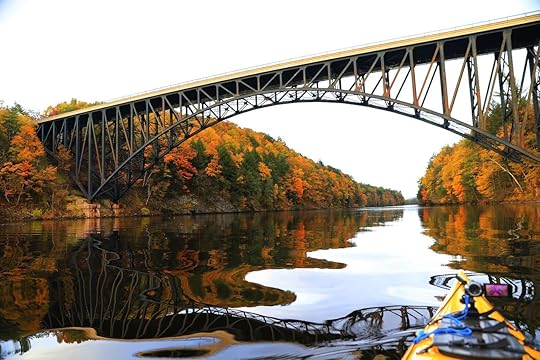
When most people think of Massachusetts, they think of two things: Boston and the beaches of Cape Cod or the North Shore. Oh, and the Red Sox, of course. Even among native Massholes, there’s a tendency to think that everything west of Boston is a wooded wilderness with little to entice a traveler. While Western Massachusetts is indeed full of green woodlands and is famous for its scenic Berkshire Mountains, there’s more to do there than visit the Basketball Hall of Fame.
The Pioneer Valley, about two hours west of Boston, is home to the Five Colleges — Smith College, Amherst College, Hampshire College, Mount Holyoke, and the University of Massachusetts. The vibrant social, cultural, and adventure scene that has grown around these schools makes the area one of the most lively in the whole state, and well worth visiting for a weekend break from Boston.
Editor’s note: Travel is still widely restricted. Some places may be closed, and events may be canceled or postponed. Check the local health guidelines and plan now to travel when it’s safe to do so.
The Five Colleges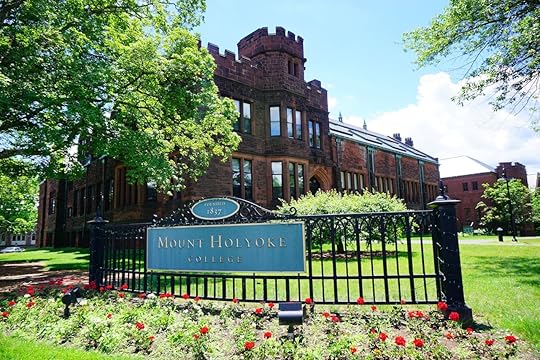
Photo: Feng Cheng/Shutterstock
As you can imagine, a community with five colleges all within a few miles of each other is a community where there’s always something to do. Amherst is the epicenter of the Pioneer Valley, home to Amherst College, the University of Massachusetts, and Hampshire College. Nearby Northampton, a nearby town with a vibrant arts and music scene, is the site of the all-female Smith College while another women’s college, Mount Holyoke, is located in nearby South Hadley.
The cultural activities, social gatherings, educational lectures, and sporting events sponsored by these colleges aren’t just for the students — they’re often open for visitors to enjoy as well. The close proximity of these five schools means there’s always a live sport to attend, university museums to visit, student theater to watch, and cheap beers to consume.
When you think of a college town, you likely think of an abundance of bars and music venues. You can find that here, but the Pioneer Valley is more than just a college community. Its entertainment offerings extend far beyond the campus life and a college crowd. From open mic nights to karaoke, there are more venues in rural Western MA than you might think, and they draw world-class acts including the likes of Bob Dylan and Miranda Lambert.
The Academy of Music Theatre in Northampton is one of the area’s most iconic music venues. Dating back to 1890, the theater hosted acts like Harry Houdini, Mae West, and Sarah Bernhardt, and for over a century it has been a popular venue for concerts, lectures, opera, and theater.
Those seeking live music in a more casual environment — i.e., where you can drink — should check out The Harp Irish Pub in Amherst, which is known for its relaxing atmosphere and traditional live Irish music. For a somewhat rowdier experience, head to Stackers, McMurphy’s, or Monkey Bar in Amherst. As long as you don’t mind the college crowd, there’s nowhere better to throw back $2 PBRs.
It’s Western MA’s historical and cultural center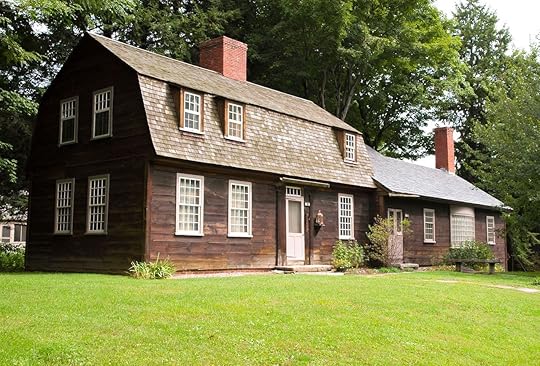
Photo: Jeffrey M. Frank/Shutterstock
As you might expect from an area steeped in academia, in a state full of history, the Pioneer Valley is a cultural oasis. Settlements in this part of Western MA date back to the 1600s, and several institutions exist to preserve that heritage. From museums and monuments to old farms, taverns, and libraries, this college community’s cultural offerings are perhaps even more enticing than cheap college beer.
Historic Deerfield, under a half-hour north from the center of Amherst, is the best way to really experience the area’s history. Consisting of 11 house museums, these historic properties allow visitors to explore hundreds of years of history along an original 330-year-old street. The experience also includes access to outdoor activities like walking tours, the Cook’s Garden — which provides fresh ingredients for the museum’s open-hearth cooking demonstrations — and the Old Burying Ground where many of the original settlers are buried. It’s not quite Colonial Williamsburg, but it’s one of the best sites for history buffs in all Massachusetts.
Bookworms will want to check out the Emily Dickinson Museum and homestead in Amherst. Few things are more satisfying than actually visiting the home of one of your favorite writers. In this house, Dickinson wrote some of her most famous poems in the mid-1800s, often drawing inspiration from the gardens on the property.
Historic houses are ubiquitous in rural New England towns, but don’t let the plethora of museums and historic farms distract from the area’s more unique offerings. Amherst College is home to the Beneski Museum of Natural History, displaying artifacts from Africa, Asia, and South America, as well as dinosaur fossils and rare geological specimens. There’s also a Yiddish Book Center in Amherst dedicated to telling Jewish history through Jewish books and educational programs.
College towns are typically synonymous with a robust art scene, and the Pioneer Valley is no different. Whether it’s the Hampshire College Art Gallery, which serves as an exhibition space for visual arts, Amherst College’s Mead Art Museum, or the Eric Carle Museum of Picture Book Art, the art scene in the Amherst area could hold its own even with that of Boston.
Festivals and events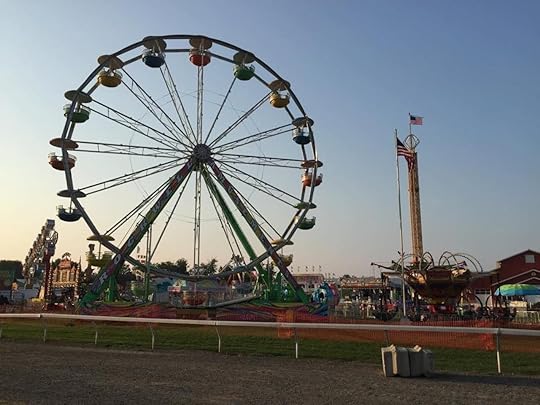
Photo: Three County Fair/Facebook
The state’s biggest festivals aren’t just reserved for the Boston area. Particularly in the summer, the Pioneer Valley is home to festivals that alone make the trip worth it.
In May, you can look forward to the Paradise City Arts Festival to really kick off the summer. Paradise City produces an award-winning show of contemporary craft and fine art in Northampton, showcasing the work of some of the country’s most prominent craftsmen, including sculpture, ceramics, jewelry, painting, and art glass. If performance art is more your style, the Ko Festival of Performance takes place every summer at Amherst College. The festival is five weeks of original theater works created by artists according to a predetermined theme.
Also in June, Django in June celebrates the study and performance of Gypsy Jazz at Smith College with famed guitarist Django Reinhardt. The festival’s main event is the Django Camp, where musicians can immerse themselves in the jazz style under the instruction of international artists. The event caps off with a weekend of concerts at the Academy of Music and other smaller venues around town.
Arguably the most notable event in the area happens in September. The Three County Fair in Northampton is the oldest continuously operating agricultural fair in the country. In early September each year, over 50 acres of fairgrounds play host to livestock and agricultural contests, top musical entertainment, a fair museum, food vendors, demolition derbies, and a midway with rides and games.
This summer, many regularly scheduled festivals may be affected by the COVID-19 pandemic, so make sure to check the festival’s most updated information before planning your trip.
Outdoor adventure
Photo: Zoar Outdoor/Facebook
Ok, it’s finally time to lean into the Western Massachusetts stereotype of trees, trails, and miles of unspoiled nature. The area has an abundance of kayaking, hiking, skiing, and cycling to help you work off that post-Monkey Bar hangover. Miles of railroads have been converted into bike paths, making for a network of bike trails perfect for exploring the rural landscape.
Skinner State Park in Hadley has plenty of hiking trails with views of the Connecticut River Valley, as well as a self-guided geology walking tour. The nearby Holyoke Range, which actually extends from the Long Island Sound to the border of Vermont, is known for its Horse Caves and ledges found along the New England Scenic Trail that once served as the hiding place for the fighters of Shays’ Rebellion in 1897. If you’re looking to stay a bit closer to town, the Manhan Rail Trail connecting Northampton to Easthampton is a great way to experience the area’s towns by bike while also getting a dose of nature.
Even if you don’t have a boat, you can still rent one at the Oxbow Marina in Northampton and spend the day on the Connecticut River. You can also go tubing or just hang out and enjoy the view. If you’re visiting during June or July, make sure to catch the epic water ski shows every Friday night.
Those looking for some real adventure probably won’t mind driving just over a half-hour to Charlemont where you can go zip lining with Zoar Outdoor. Spend the day soaring through the Berkshire trees, enjoying views of the Deerfield River Valley and the northern Berkshires. Zoar lets you ride 11 different zip lines as part of the experience. If that’s not quite high enough above the ground for you, head 40 minutes west to Worthington and take a hot air balloon flight. Worthington Ballooning will bring you high above the fields, rivers, forests, and mountains of Western Massachusetts, giving you a dramatic perspective of the area’s natural beauty.
Anyone who’s been to the Pioneer Valley knows the area isn’t “just a college town,” and Western MA isn’t “just a bunch of farms.” It strikes the perfect balance between classic New England culture and history, outdoor adventure, and good old-fashioned nightlife. It’s a combo that hits as good as the Red Sox on their best day. 
The post The Pioneer Valley is Western MA’s little-known oasis of fun appeared first on Matador Network.

Matador Network's Blog
- Matador Network's profile
- 6 followers



